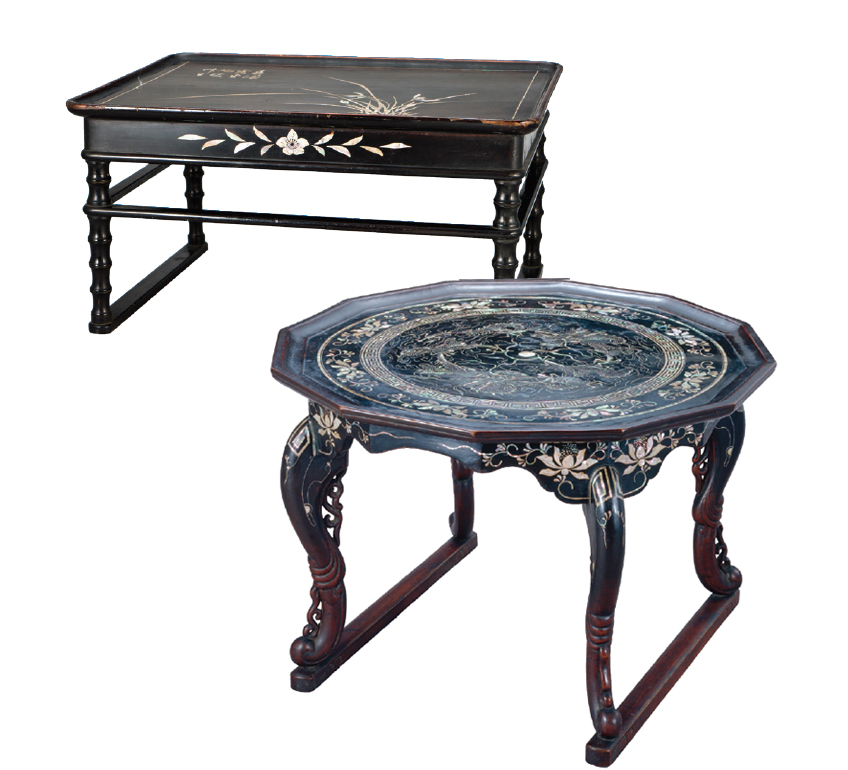
Contents










Crafts · Written by Lee Eun-yi, designer & writer
Soban
Table of Respect
Korean families commonly get together around a soban (dining table) and share pots of food and side dishes.
In the past, however, Koreans used to be served a single portion meant for one person.
This Confucian tradition was fundamentally geared to avoid conflict during meals and promote respect for individuals.
Soban culture is rapidly deteriorating in modern Korea, but its true meaning is worth reflecting on.

© National Folk Museum of Korea
Soban is a small portable table that functions as a tray and a table. It was especially practical for Korea’s sitting culture as well as for the traditional house structure in which the rooms and the kitchen were far apart. To make it easier for women to carry things from the kitchen to the dining room, a soban was as narrow as a woman’s shoulders and made with lightweight wood such as ginko or zelkova. Social factors like position, age and gender determined who sat with whom at the table. For example, people of higher social status and the elderly would use a table alone, while close family members and friends would share the same table. This meant that each house had several sobans, and upper-class families who frequently hosted guests kept dozens to 100 of the little tables at home.
Confucianism, which teaches the utmost respect for the elderly and distinction between the sexes, usually did not allow families to share a single table. In addition, a man and his son were prohibited from sitting together to prevent conflict that occasionally erupted while dining. A historical record during the reign of Joseon Dynasty King Jungjong (1506-44) tells the story of a man who escaped a death sentence for murdering his father while eating at the same table. When children turned 7 years old, they also used their own tables since they were considered independent individuals around that age. Remains from Gojoseon, Korea’s first ancient kingdom, a mural from the Goguryeo Kingdom (37 B.C.- 668 A.D.) and relics from the Silla Kingdom (57 B.C.-935 A.D.) all show traces of soban, illustrating just how old the table’s history is on the Korean Peninsula.

A small, portable dining table made in Tongyeong, Gyeongsangnam-do Province (date of origin unknown) © National Museum of Korea (left)
Made during the Joseon Dynasty (1392-1910) and finished with mother-of-pearl decoration and lacquer © National Museum of Korea (Right)
Variety of Designs
With simple yet unique designs, soban is a prime example of traditional Korean craftsmanship. Depending on region, soban is categorized into tongyoungban, haejuban and najuban. Haejuban is considered to have the most luxurious design and sophisticated openwork, with two wooden boards on both sides used as legs to support the table. Tongyoungban has two stretchers between its legs and sports a detailed painted finish. And najuban features the simplest design with extra rims surrounded on top to make the table bigger without causing it to bend. Other soban designs passed down since ancient times include hojokban (tiger), gujokban (dog) and majokban (horse), all of which signify the names of animals sculpted on the table. The shapes of tops also vary from rectangular, circular and polygonal to flower shaped.
To build a soban, artisans sculpt the wood, add rims, cut a groove to fit the legs, decorate with openwork and coat it with waterproof material several times. Skills are required not only to handle the wood but an artistic touch brings an aesthetic quality to the design, making it a challenge to create. Soban artisans possessing these unique skills are protected by the government designation Important Intangible Cultural Heritage No. 99.
Soban and its culture have lost their status since the Japanese colonial era as a shortage of supplies discouraged the use of a one-person table as well as having several tables at home. Recently, however, the tables have regained the spotlight thanks to a renewed sense of their practicality as interior decoration items. Traditional tea shops and restaurants offering an authentic Korean experience serves customers using soban. Designers also recreate the tables using a variety of methods and materials like metal, ceramics or 3D printing to add a modern flair to traditional designs. Reflecting the wisdom of Korea’s ancestors to respect the individual and ensure proper table etiquette, soban offers a unique chance to reflect on the nation’s traditional eating practices and table manners.
Other Articles















